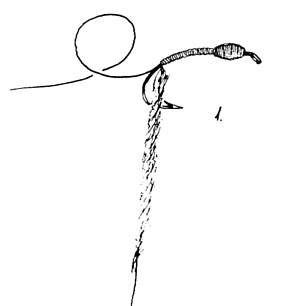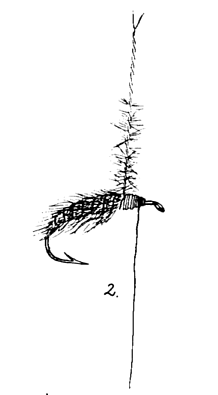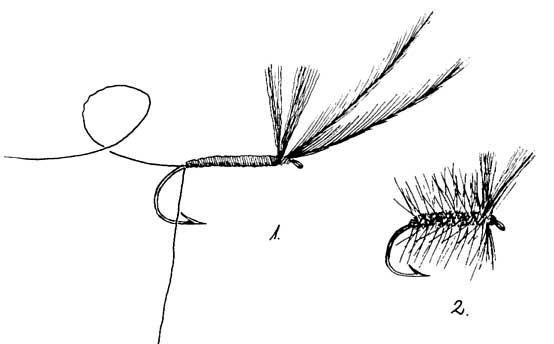|
Simo Lumme's Sedge Pupa I came in 1973 into contact with the
finnish architect and flyfisher Simo Lumme.
"I try to imitate it with a dubbing of a mixture of artificial wools - partly stiff; but with a sharp lustre like polyamid (nylon, perlon, antron etc.), partly something more soft like polyacryl (dralon, rayon or natural wool), and I use white wool to 'tone' the colours down. I cut the fibres in short lenghts, separate them and mix them thoroughly, until I get the right hue. Exactly the same way a painter mixes the colours on his palette". Simo is not using very much dubbing - Most flytiers use all too much material! After each turn of dubbing he brushes the dubbing backwards with his fingers. In that way, the tying silk will always be close to the hook and not placed on top of another turn of dubbing. After the tying he combs the whole fly with a piece of ‘Velcro’ , so that the fibres trail backwards. Should he by accident have used too much dubbing, then he cuts the fly with a pair of scissors and then treats it once more with the 'Velcro'.
I got a large amount of the different artificial wools he used and the Antron is just as sparkling as the wool one gets today. Simo Lumme describes his final colours for the abdomen as: Light orange, light sea-green and light sandy-brown. The tying can seem very simple; but it’s of utmost importance, that the fly looks ‘light’ and surrounded by a 'halo' of fine, fluttering fibres, that diffuse the contour of the fly. Nalle Puh
It’s a very effective fly and floats high on the water. © Preben Torp Jacobsen. 'Flyleaves'.
|


